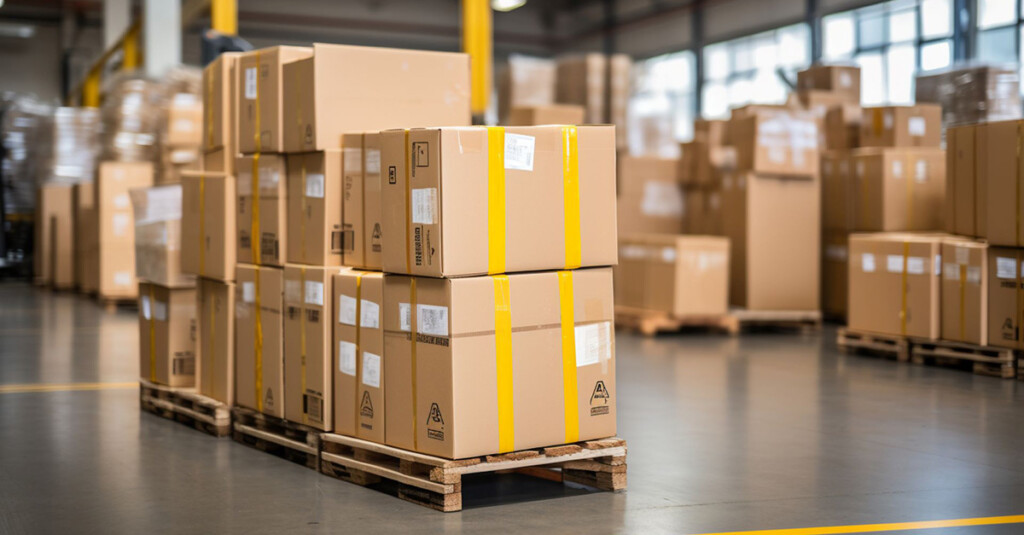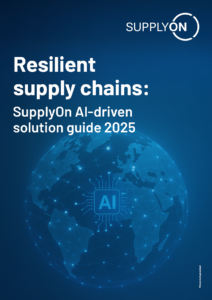Skip to content
Supplier Onboarding is the first and most important step for successful digital collaboration with your business partners via SupplyOn. But what does it take to get started smoothly? Here we show you in words and pictures how we successfully bring our customers and their suppliers on board through expertise, communication, and experience.Why Supplier Onboarding is crucialIntroducing new processes via a digital platform is anything but trivial, but it is feasible. With our approach to supplier onboarding, you can master the complexity. Our goal is to integrate suppliers into our platform efficiently, reliably, and sustainably. The key to this lies in close cooperation with our customers. A successful onboarding project thrives on partnership-based coordination between the customer and our experienced team. Behind every project is not only a team of experts, but also a well-stocked toolbox that makes onboarding as efficient as possible.Communication as a success factorWe work with our customers to develop customized communication strategies to inform suppliers, convince them of the benefits, and get them excited about using the platform.After all, without the active participation of suppliers, there is no added value for the customer.Technical excellence and personal supportA smooth onboarding process requires precision. The quality of the supplier master data is crucial—only with up-to-date and correct contact details can a connection to suppliers be established. In addition, our dedicated call center team actively supports suppliers during the registration process and helps to overcome any obstacles at an early stage.More than just technical connection: Enablement as a goalOur claim goes beyond purely technical onboarding. We see supplier onboarding as “enablement” – in other words, empowering users to use the platform efficiently and independently. To this end, we provide central information portals that bundle all important project information, instructions, training, information events, and explanatory videos. These portals serve as a central hub during the onboarding phase – a real added value for everyone involved.The human factor countsEven complex projects can be implemented successfully when a structured approach meets experience – and when the human factor is not neglected. This is exactly what the SupplyOn onboarding team stands for: technical excellence, strong communication skills, and always with a personal touch.The video featuring this articleJoin us in the video “Supplier Onboarding” for exclusive insights into our daily work.

Trade tensions, export bans, and regional conflicts are rewriting the rules of global supply chains. One spark, whether a tariff, a blockade, sanctions, or a new law, can derail production, inflate costs, and fray customer trust overnight.Companies must be ready to shift suppliers and adapt their cost structures quickly. SupplyOn’s AI-driven platform empowers you to steer securely through geopolitical turbulence while keeping costs under control.Volatility and uncertainty can lead to disruptionCurrently, companies involved in global trade must navigate shifting geopolitical risks, as well as new regulations:New U.S. tariffs could inflate production costs by 10–20%.Chinese-Taiwan tensions could halt semiconductor shipments and crash the automotive and tech sectors.Armed conflicts in Ukraine and the Middle East are pushing up prices, delaying shipments, and throttling availability across industries.Compliance risk for new regulations such as CBAM could damage your reputation and result in penalties.Such risks can lead to shutdowns at Tier-1 or Tier-2 suppliers, or high freight rerouting fees. Last-minute sourcing changes can add millions in unexpected costs.Build strong and resilient supply chainsSupplyOn’s platform is designed to help you detect risks early and respond fast. Here is how the four core solutions help you anticipate and mitigate geopolitical risks.Supply Chain Collaboration (SCC)Full transparency into supplier activities, logistics status, and regional instability enable you to stay informed and agile.Gain real-time visibility from forecast to order execution.Get AI-driven exception alerts for disruptions or delivery delays.Eliminate paperwork with digital Advanced Shipping Notices (ASN), customs declarations, and invoicing workflows.Source-to-Contract (S2C)Flexible sourcing and contract tools let you respond fast to market shifts, tariffs, or compliance changes.Adjust sourcing fast by launching new e-sourcing events in minutes.Use AI for scoring suppliers on cost, stability, compliance, and geopolitical exposure.Accelerate negotiations through live e-auctions to secure competitive terms with reduced risk.Supplier ManagementVisualize global supplier risk and monitor deeper tiers in your network.Use geo-risk cockpits to map exposure to conflict zones or sanction areas.Achieve n-Tier visibility to uncover conflicts or risks in the sub-tiers early.Integrate external data (such as from Dun & Bradstreet) to have a clear picture of suppliers’ financial health.Transport ManagementGain real-time insights to avoid delays and cost spikes from shipping disruptions.Predict ETAs and get alerts before delays impact production.Reroute shipments instantly when risk hot spots emerge, with AI proposing alternative routes.Track shipments live to reduce customs dwell time and document errors.Detect freight cost anomalies, including unexpected tariffs or surcharges.Take the wheel to outmaneuver riskIn a world where tariffs can spike overnight and conflicts can disrupt key shipments, you need to anticipate what’s around the corner. SupplyOn’s platform delivers real-time data and AI-driven alerts. Customers report that they can cut response times by up to 30% and reduce logistics costs by 20%.SupplyOn also simplifies ESG reporting. It gathers CO2, CBAM, and PCF data from suppliers, sends reminders, and prepares reports for EU submissions. This helps you stay compliant and avoid fines without extra workload.Why SupplyOnWith 300 million ordered parts processed daily, SupplyOn supports the largest industrial network of its kind. It is built to connect seamlessly with ERP systems such as SAP S/4HANA or Oracle. Multilingual support teams ensure fast adoption.More than 200 major manufacturers and network of 140,000 supplier rely on SupplyOn. Our success-as-a-service model goes beyond software to deliver measurable results and continuous improvement.

The biggest risks are the ones you don’t see. In today’s complex and volatile global market, companies are grappling with issues such as geopolitical tensions and strict regulations. At the same time, unexpected disruptions often hide deep within multi-tiered supplier networks.Supply chain transparency has never been more critical - or more elusive. Many risks go unnoticed until it’s too late. But what if you could illuminate your entire supply chain? Not just Tier 1 suppliers, but also further down the supply chain, where individual components are processed and assembled.SupplyOn Supply Chain Locations is a pioneering solution that enables companies to make their entire value chain transparent and manageable, from the smallest production steps to finished components.The challenge: You can't manage what you can't seeMany organizations today suffer from a fundamental visibility gap. They know who their Tier 1 suppliers are. But beyond that? It’s often a black box. Risks often remain undetected in the sub-tiers.Common risks in manufacturing supply chains include:Regional concentrationSingle points of failureSub-tier supplier capacity issuesRegulatory requirements (for example, LkSG, UFLPA, CSRD)Without a clear line of sight into the full production process and all entities involved, companies struggle to trace quality issues, assess ESG performance, or ensure compliance.The solution: Map your manufacturing realitySupply Chain Locations enables you to display the entire manufacturing footprint, multi-level deep. It provides business-critical visibility by enabling you to:Map the full supply chain network, multi-level and location-specificIdentify manufacturing locations and work steps beyond Tier 1Collaborate efficiently with suppliers through built-in SupplyOn platform integrationCollect data in a structured, standardized format for easier traceability and internal integrationSemiconductor manufacturing, for example, involves numerous distinct, geographically dispersed steps. From wafer sorting to backend testing, or sub-assembly to final packaging, Supply Chain Locations illuminates every touchpoint.Data collection: A structured, scalable approachHaving accurate, comprehensive data informs you of potential risks tied to specific geographies or dependencies. Through flexible templates and multi-level data inquiries, businesses can capture:Supplier identities on all tier levelsManufacturing site locations (BoM structure-driven)Specific work steps at each site (e.g., grinding, assembly, finishing)This data flows seamlessly into internal systems or is utilized across other SupplyOn solutions, such as Risk Management, Sourcing, and ESG, creating a truly connected supply chain management ecosystem.Key benefits: See more, move faster, improveCritical data is shared across functions to anticipate potential events and improve reliability. Unprecedented visibility: Gain a complete picture of your manufacturing network, identifying entities and activities you previously couldn’t see. Proactive risk management: Spot concentration risks and geopolitical exposures. Identify single points of failure before they become disruptions. Regulatory compliance, simplified: Comply with LkSG, UFLPA, and CSRD more effectively by leveraging accurate, traceable supply chain data. Enhanced quality management: Trace product quality issues directly back to specific processes or sites—no more guesswork or fragmented analysis.Trusted foundation: Integrate and collaborateSupply Chain Locations benefits from the robustness of the SupplyOn platform. Here is where technology and collaboration join forces, providing you with:Secure, multi-tenant architectureVast existing supplier network, with many already onboardDeep integration with sourcing, procurement, and quality systemsEfficiency through data standardizationYou can also leverage the SupplyOn platform for efficient communication and data transmission by suppliers. Supplier collaboration is the key to building resilience, ensuring compliance, and enhancing quality control.Ready to illuminate your supply chain?Risk does not stop with Tier 1. So don’t be left in the dark. Avoid surprises with SupplyOn Supply Chain Locations. Gain the visibility you need to make better decisions, faster. Build strategies that are grounded in real, actionable supply chain intelligence.

In today's competitive economy, the efficient management of production processes is a key success factor. Companies are faced with the challenge of planning production times and quantities in such a way that they both meet demand and minimize costs. But how can this balancing act be achieved?In this article, we look at how matching demand and capacity is the key to cost optimization and how our software solution with its powerful simulation and optimization feature makes a decisive contribution to this.The basics: Why are production timing and quantities so important?A company's production is closely linked to several factors: Demand, available capacity, storage costs and delivery times. Inefficient planning can have serious consequences:Overproduction leads to increased storage costs and a risk of write-offs if products become obsolete or are not sold.Underproduction, on the other hand, causes supply bottlenecks that result in lost sales and possible damage to customer relationships.Optimizing production timing and quantities helps to minimize these risks and at the same time reduce costs along the entire value chain.Key factors for optimization1.Demand forecastThe basis of all production planning is a precise forecast of demand. This includes analyzing historical sales data, taking seasonal fluctuations into account and observing market trends. Modern technologies such as machine learning and big data can make a significant contribution here by identifying patterns and correlations more quickly and accurately.2.Capacity managementProduction capacity is often limited by resources such as machines, personnel and materials. Companies must ensure that they utilize their capacities optimally without risking overtime, expensive production relocations or high machine wear and tear.Flexible capacity models - such as shift systems or external production partners - offer scope to cushion peaks in demand.Cost factors also play a decisive role.Our solution: Simulation feature for flexible "what-if" analysesThe complexity of modern production planning is often complicated by uncertainties and dependencies in the supply chain. Our software solution addresses this problem with an integrated simulation feature that offers customers and suppliers alike enormous added value.With this feature, companies can flexibly and efficiently carry out "what-if" analyses to evaluate possible scenarios:How does a sudden increase in demand affect the number of my alerts?What happens if a supplier delays a delivery?What production quantity minimizes the total costs for a given stock limit?How critical would a temporary reduction in capacity be?The simulation provides answers to these questions in real time. That way you can:Recognize bottlenecks at an early stage and take action before they occur.React flexibly to external influences, such as seasonal fluctuations or market changes.Increase efficiency by finding the optimal balance between production, storage and transportation costs.AI-supported suggestions for optimizing production planning can almost completely relieve you of the manual effort of demand and capacity planning.The interactive visualization and the ability to share simulations with your partners bring all stakeholders together to make informed decisions and jointly develop an optimally coordinated strategy.Based on these parameters, our tool determines optimized production planning and even provides insights into the basis on which decisions were made.

In our recent webinar, "How Bosch Rexroth runs modern Demand Capacity Management (DCM) in 2025," key experts from Bosch Rexroth provided comprehensive insights into managing today's increasingly complex and volatile supply chains. Here are the extensive highlights from the session, which offer valuable lessons and practical strategies for other manufacturing companies:1. Comprehensive Integration of Digital PlatformsBosch Rexroth emphasized the importance of fully integrating digital platforms across their entire operational ecosystem. By employing these integrated systems, Rexroth has achieved seamless real-time collaboration with global suppliers, thus gaining complete visibility and control over their supply chain. This integrated approach addresses critical challenges such as data fragmentation, inconsistent supplier communication, and slow decision-making, enabling manufacturers to swiftly adapt to changing market demands and conditions.2. Transparency and Analytics for Enhanced Decision MakingBosch Rexroth demonstrated their sophisticated use of transparency and predictive analytics powered by SupplyOn’s advanced tools. Predictive analytics enables fast demand simulation, proactive capacity management, and the ability to swiftly respond to potential disruptions. Other manufacturing companies facing uncertainties such as demand volatility and unexpected supply chain interruptions can leverage predictive analytics to anticipate changes, optimize resource allocation, and strengthen overall supply chain resilience.3. Agile Supply Chain ProcessesA significant challenge highlighted by Bosch Rexroth was the difficulty in maintaining responsiveness amid unpredictable demand changes and supply disruptions. To address this, they have developed highly agile supply chain processes underpinned by robust and continuous supplier collaboration. By emphasizing flexibility, Bosch Rexroth has successfully managed unexpected fluctuations, avoiding inventory shortages and excesses, thus ensuring customer satisfaction and operational efficiency. Manufacturers can adopt similar agile methodologies to enhance responsiveness and flexibility in their supply chains.4. Real-Time Supplier Collaboration with Capacity TrackerBosch Rexroth specifically detailed their strategic use of SupplyOn’s Capacity Tracker, a crucial tool for achieving real-time supplier collaboration and capacity monitoring. This innovative tool allows Rexroth to identify potential bottlenecks early, proactively manage supplier performance, and significantly reduce lead times. Other companies can implement similar real-time tracking solutions to improve supplier responsiveness, minimize disruptions, and achieve more reliable forecasting.5. Automation and Process OptimizationBosch Rexroth extensively highlighted the importance of automation in overcoming labor-intensive, error-prone manual processes. By automating routine operations, Rexroth has significantly improved operational efficiency, reduced human error, and enhanced overall process accuracy. Automation frees their teams to focus on strategic initiatives, driving innovation and long-term improvements. Manufacturers should view automation not merely as a method for cutting costs but as a strategic enhancement for operational effectiveness and competitive advantage.Additional Challenges AddressedDuring the webinar, Bosch Rexroth also discussed several additional challenges faced in modern supply chain management:Data Complexity and Integration: Managing disparate data sources and integrating them effectively was identified as a common struggle. Rexroth’s digital integration strategy demonstrates the importance of centralized data management.Supply Chain Visibility: Gaining complete visibility throughout the supply chain is essential but often difficult due to fragmented systems and disconnected suppliers. Bosch Rexroth's implementation of real-time tracking and analytics provides a clear example for other manufacturers.Resource Allocation: Efficient resource allocation in response to fluctuating market conditions requires sophisticated analytics and predictive capabilities, which Rexroth successfully addresses through advanced analytics.What Other Manufacturing Companies Can LearnManufacturing companies aiming for excellence in supply chain management can significantly benefit from adopting Bosch Rexroth’s comprehensive and proactive strategies. Integrating digital platforms, employing predictive analytics, fostering agility, enhancing real-time supplier collaboration, proactively managing international trade risks, and leveraging automation collectively lead to tangible outcomes. These include improved forecast accuracy, reduced lead times, increased operational efficiency, and measurable return on investment.

Just recently, I attended the S&OP Summit in Amsterdam – the leading conference on Sales and Operations Planning (S&OP). My aim was to find out about the new possibilities and developments in S&OP and IBP so that I could show SupplyOn customers the added value of integrating planning and execution. Strategic planning has always been at the heart of a successful company. Processes such as S&OP and IBP (Integrated Business Planning) provide a structured framework for this. But despite decades of further development, many companies are still struggling with the same challenges: data silos, a lack of proof of added value and internal resistance. It is particularly striking how little consideration has been given to integrating external data sources into these processes.The importance of S&OP and IBP for companiesS&OP and IBP help to align a company's strategic, operational and financial plans. They are designed to create transparency, make data-based decisions and increase agility in the market. Companies that successfully implement these processes benefit from:More efficient operations through coordination between departmentsBetter forecasts through a unified view of supply and demandHigher resilience to market changes and risksBut the key to truly integrated planning lies not only in internal collaboration, but also in the ability to take external influences into account at an early stage.External data: the missing piece of the puzzleIn an interconnected world, external factors such as market trends, supply chain disruptions, geopolitical events and weather conditions have a significant impact on corporate planning. Companies that integrate external data sources into their S&OP and IBP processes have a clear competitive advantage:Better demand forecasting: Data from suppliers, customers and third-party providers help to predict demand more accuratelyProactive risk management: early warning systems based on external data sources can identify disruptions in the supply chain more quicklyOptimization of the supply chain: real-time data on traffic, inventory levels and production capacities enable more efficient resource allocationData quality as a basic requirementA crucial factor for success is the quality of the data. Companies must ensure that their internal and external data sources:Consistent and alignedReal-time capable or at least available in real timeTransparent and comprehensibleThis requires not only technological investments, but also organizational changes. Teams need to be trained, processes adapted and a data-driven corporate culture fostered.The path to integrated planning of the futureTo realize the full potential of S&OP and IBP, companies should follow these steps:Break down data silos: A central platform for integrating internal and external data is essential.Demonstrate added value: The benefits of integrated planning solutions must be clearly communicated to overcome internal resistance.Prioritize external data: Partnerships with third-party providers, integration of suppliers, e.g. via SupplyOn, and technologies such as AI and machine learning can help to use external data more effectively.Continuous improvement: S&OP and IBP are not static processes. They must be regularly reviewed and adapted to new market conditions.ConclusionThe future of successful S&OP and IBP projects lies in the integration of external data sources, such as those provided by SupplyOn for capacity or risk management. By taking this step early on, companies not only create the basis for better decisions, but also strengthen their competitiveness in an increasingly complex and dynamic world. It is time to fully exploit the potential of data – for truly integrated planning and sustainable success!

Packing goods for shipping poses greater challenges for suppliers than might be assumed at first glance. In terms of processes and systems, this step is usually linked to delivery, but this is only the case in reality in a few cases. Many companies pack directly after the manufacturing process or quality control and then store the customer-specific packaged containers until dispatch.SupplyOn has developed the "Pack-to-Stock" module to ensure an end-to-end digital process - and thus support all parties involved in their digitalization strategy. The module decouples the packaging process from the creation of the Advanced Shipping Notification (ASN). Users can pack and label the goods directly after production and later assign the pre-packed materials to an outbound delivery without any additional manual input.Digital twin with all relevant informationThe core of Pack-to-Stock is the ability to all important product-relevant information such as production, expiry and use-by date, batch number, software or hardware revision, etc. before production. Packaging orders can be created with reference to a material number, an order or a delivery call-off. The system supports the transmission of packaging instructions, which are automatically saved in the system. Pack-to-Stock calculates the number of single packs and handling units required based on the planned production quantity and allows the required single pack and HU warehouse labels to be printed directly. It thus forms a digital twin with all relevant information on the goods stored in the warehouse.The module also offers all the important functions for adapting the digital twin to the produced and packaged containers. This means that the fill quantity of individual containers and the structure of the packs can be efficiently adapted to reality at any time. Production faults and quality control results can also be easily mapped in the system.Easy assignment of a deliveryPicking and delivery planning can be carried out as before in merchandise management and the warehouse management system. The creation of the delivery in Supply Chain Collaboration (SCC) also takes place unchanged on the basis of the previous documents (purchase orders or delivery call-offs). What is new is that pre-packed material can be easily assigned to the outbound delivery by scanning the package or handling unit ID. With the assignment, all part-specific information is also automatically transferred to the delivery.The system also supports all forms of mixed scenarios, such as the delivery of pre-packed and non-packed materials and the manual creation of additional handling units. The assignment of pre-packed materials to an outbound delivery prevents duplicate entries or input errors. In particular, the transfer of information already entered before production considerably reduces the time required for delivery and avoids duplicate entries without loss of information. The complete packaging information, both one- and two-stage, is transmitted to the customer and enables easy, fully automatic electronic goods receipt.Inventory made easyPowerful inventory functions make it possible to maintain an overview, scrap entire batches in the event of quality problems or track when which items were delivered.The Pack-to-Stock module offers the flexibility required to adapt the packaging process to internal processes. This allows you to map your customers' requirements in shipping without additional effort and print all the labels required for material identification and shipping.

Sales and operations planning (S&OP) has come a long way since its origins in the 1970s as a production planning tool. Today, as supply chain technology advances, S&OP is evolving into a more integrated approach. By expanding into areas like product management, demand planning, capacity management, finance, and corporate strategy, S&OP has transformed into what we now call Integrated Business Planning, or IBP. IBP provides a strategic view of the supply chain that integrates business planning and forecasting with corporate goals in a single model, extending the previous S&OP that was limited to individual silos.As with all planning tools, the results achieved with IBP are highly dependent on the quality of the data. The use of digital technologies and data analytics is critical to better predict demand and optimize production planning. Modern demand forecasting systems help companies respond more flexibly to market changes. Digital twins and AI-based tools are used to simulate complex supply chains and predict potential disruptions. GenAI models are helpful for the big picture, while specialized AI models and machine learning (ML) provide more accurate results than previous technologies.However, all analytics are based on data—and the more accurate and comprehensive the data, the better the planning results. So, if you are wondering how you can improve your supply chain planning system to create more value for your customers and more profitability for your business, take a step back and ask yourself the following questions:What do individual leaders in the organization want to achieve?What does their data tell them?What is the quality of the data?What conclusions can be drawn from the analysis results?In the area of data and data quality, SupplyOn offers two tools that can be used to improve data quality: Capacity Management and Traceability.In the case of capacity management, the available capacities at the supplier are queried in various time frames on the basis of the customer's delivery call-off data. Providing qualified capacity data to IBP enables more accurate planning. Combined with data from internal systems, this results in more accurate demand planning—and a very detailed picture of supply chain reliability.SupplyOn's traceability system also requests data such as quality information, which, when integrated into the IBP, provides a more accurate plan of availability and possible quality deficits. This allows the plan to be adjusted or countermeasures to be taken in good time.A number of customers have already taken this into account when considering the introduction of an IBP system and have implemented a connection to SupplyOn with very positive results. We would be happy to provide you with more detailed information on the integration and benefits of SupplyOn solutions in your planning environment.

In a rapidly changing political and technological world, mutual trust between business partners plays an increasingly important role. Collaboration within trusted supply networks is becoming a critical competitive factor. It is the basis for successful cooperation within the industry. Trust is also built through the timely and comprehensive provision of data that is shared by all parties. The resulting ecosystem brings immediate economic benefits and is the building block for end-to-end industrial digitalization.So far, 2024 has been a year of constant challenges: Geopolitical conflicts, economic crises, and rapid technological leaps are all putting politics, business, and society to the test. Despite all the uncertainties, many events have made one thing clear time and again: We can only move forward together. That is why we need partners from other countries, other industries and other parts of our supply chain - partners we can trust.Politicians in Germany and industry have recognized this. Various initiatives such as GAIA-X, Manufacturing-X or Catena-X have been launched to bring together the various players in an integrated value chain. SupplyOn was also addressed, as SupplyOn has been operating an ecosystem for more than 20 years, has continuously expanded it and is now also interoperable with other ecosystems such as Catena-X.In a business context, such a network requires one thing above all else: mutual trust. Those who collaborate beyond their own company boundaries and strategically share information with partners, suppliers, customers or government agencies need a secure, reliable digital environment!IDC's "Future of Industry Ecosystems 2023" study shows once again that ecosystems and business success are closely linked: 90% of respondents said they will increasingly rely on connected data ecosystems in the future and plan to maintain or accelerate their investments in them. The drivers are:Increased business agility,greater process automationimproved system integration, andincreased data sharing with partners, also for ESG reasons.It is no secret that data and distributed data is what gives networked ecosystems their unique value. Teams and systems in different companies, locations or government agencies can access the same data in real time. Access rights control the shared view of the data, giving stakeholders an unprecedented view of their own information and a clear understanding of the big picture. Based on this broader insight from multiple systems, stakeholders can now make more informed, faster decisions.In practice, we have already seen that this approach to digital collaboration is successful. Companies such as Pfizer and Biontech were able to research a vaccine against Covid-19 in a very short time, and leading companies such as Henkel and Covestro are already using the digital twin to make their contribution to decarbonization across teams. At a large company like Henkel, each business unit functions as a separate company. In one project, more than 4,000 physical and virtual sensors were installed in different areas and integrated into a single system. These sensors measure electricity, fossil fuels, compressed air, steam, water, and waste water, showing energy consumption on a plant-wide level, as well as in individual production areas and technologies. This enables Henkel to clearly identify where and how energy is consumed in different teams and parts of the company, and to initiate measures to reduce energy consumption. As a result, they have improved energy consumption and emissions data across the supply chain by 5 to 6 percent per year.The integration of artificial intelligence (AI) throughout the system provides even greater competitive advantages. Predictive and prescriptive analyses, for example, make it possible to predict bottleneck situations in the supply chain in good time, identify risks and thus proactively avoid supply bottlenecks. Here, too, SupplyOn is already using AI solutions in its ecosystem to strengthen the resilience of the supply chain, make inventories and bottleneck situations visible, minimize risks and thus enable faster and better-informed decisions. This enables them to ensure that products and services meet customer expectations and that ESG regulations, among others, are implemented efficiently (see SupplyOn's ESG Suite).Buyers, planners, schedulers, suppliers and customers: Each stakeholder benefits from a holistic view of the value chain with improved transparency and real-time data. An analysis by Aveva shows that integrated ecosystem thinking enables industry leaders to increase profitability by 10 percent, triple return on investment and achieve up to 20 percent higher sustainability performance. The SupplyOn experts will be happy to advise you on how to successfully implement an ecosystem.

Sustainability and climate initiatives are increasingly important today. At the same time, companies are under increasing pressure to meet legal requirements for reporting carbon emissions. For suppliers, this means providing their customers with detailed information on their production emissions. To make this process easier, SupplyOn offers an innovative survey tool that optimally supports the user by integrating an intelligent chatbot.SupplyOn's new chatbot is based on the latest generative AI technology. It is trained to support users in completing the Corporate Carbon Footprint (CCF) survey. The bot draws on a comprehensive database of user guides, question and answer lists and other content.By interacting with the chatbot, users can pose questions directly to a digital assistant that provides immediate, expert answers. Long waits for support feedback are a thing of the past.Strengths of the chatbotOne of the chatbot's greatest strengths is its ability to explain and clarify the technical vocabulary used in the survey. Users can ask questions to better understand what exactly is meant by a particular question. The chatbot can also provide information on measurement and calculation methods for different types of emissions, as well as details on possible energy mixes.A particularly helpful feature of the chatbot is its intelligent "reasoning". The bot can independently analyze whether the emission of a described process is a direct or indirect emission, or whether it should be classified as a downstream or upstream emission. In this way, the digital assistant can recommend to the user in which field of the survey specific emissions should best be entered.Launch of a comprehensive AI-based support strategyThe CCF chatbot marks the start of a company-wide introduction of an AI-based help and support system at SupplyOn. The aim is to simplify the use of our applications and significantly reduce support times for our platform users.The integration of the chatbot into the CCF survey is an important step in making it easier for companies to comply with sustainability standards while increasing efficiency. By using AI technology, SupplyOn ensures that its customers are optimally equipped for the challenges of the future.SupplyOn's goal is to provide customers with innovative solutions that meet both the demands of the present and the challenges of the future. The new chatbot is an integral part of this strategy and underlines our commitment to sustainability and technological excellence.

